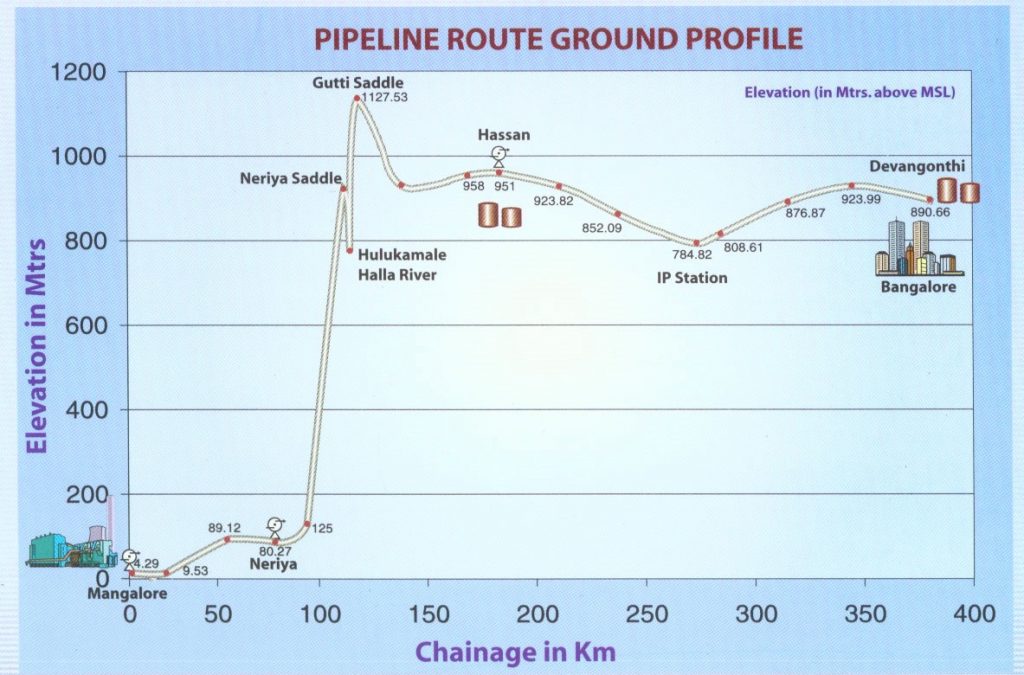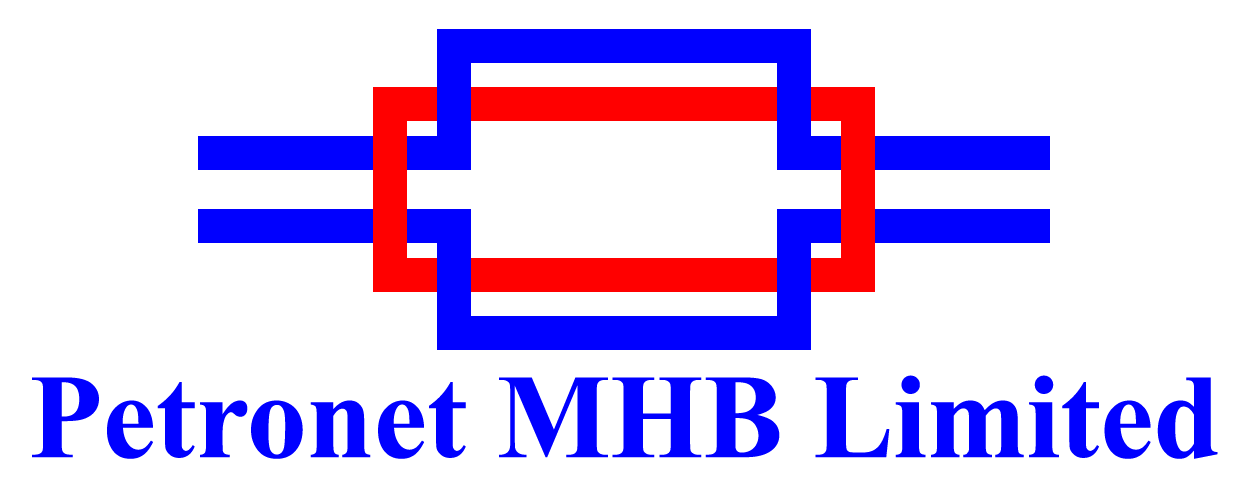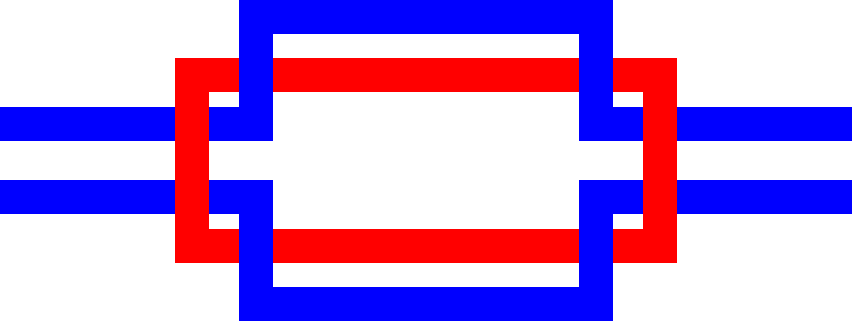The pipeline takes off from Mangalore Refinery located in Dakshina Kannada District, Karnataka State.
The pipeline passes through 237 villages & 17 Taluks under administrative jurisdiction of Dakshina Kannada, Chikkamagalur, Hassan, Mandya, Tumkur and Bangalore rural & Bangalore urban Districts of Karnataka State.
The entire pipeline route is made up of diversified landscape and is characterised by undulated profile with the presence of hill ranges, rocky areas, plains, streams and valleys. The pipeline from Mangalore runs by the shortest route through the coastal plains and travels through the Western Ghats of Dhamastala Neriya Devaramane sector.

General description of route & terrain conditions
The elevation pattern varies from 4.39 meters at Mangalore take off point with respect to Mean Sea Level (MSL) and goes down to 0.4 meters at the lowest point and then rises gradually up to 125 meters at Pump Station over a distance of 79.2 Km pipeline then enters Charmadi Ghat of Western Ghats and further steeply rises within 14.399 Km to 914.61 meter at 93.349 Km Chainage and then goes down to 769.61 meter at 96.77 Km Chainage at Hulukamale halla river and further steeply rises within 2.13 Km to 1127.53 meter at 98.90 Km Chainage. i.e at Gutti saddle. The slopes are up to 70º and even 68 long radius bends have been used within 1 Km. Then the pipeline descends and traverses Coffee Estates towards Hassan pumping and delivery station at 165 Km. From Hassan the pipeline covers a distance of 197.3 Km to reach Bangalore (Devangonthi) Receipt station. Finally the pipeline terminates at Devangonthi Terminal station at 362.3 Km about 35 kms east of Bangalore city. The pipeline traverses through 4.85 kms of Reserve Forest area, 3.35 kms of State Forest area, 24 kms of Ghat section, 15 km of coffee plantation area, 4.5 km of cashew nut plantation, 7.4 kms of Areca nut plantation, 34.1 km of barren land and balance crop and mixed plantation area. The Mundaje & Balur Reserve Forest and Hulukumale Halla Shola Forest contains valuable and rare species of flora and fauna including wild animals. In the entire route, the pipeline crosses 8 major rivers viz. Gurupur, Netravathi, Aniyur, Japavathi, Hemavathi, Agachi, Shimsa and Arkavati. It also crosses about 338 different roads (including 5 National Highways) and 8 major railway lines where the horizontal drilling method is used for laying, so that normal traffic of major highways and railways were not affected..

